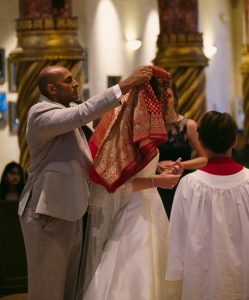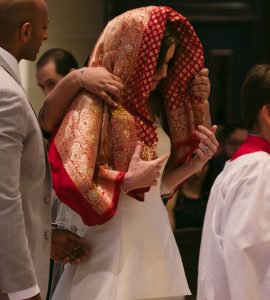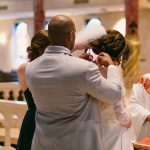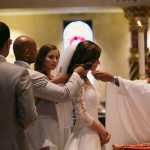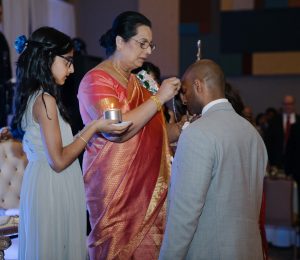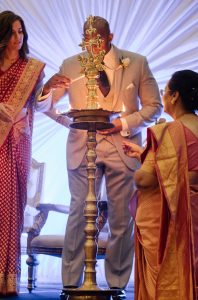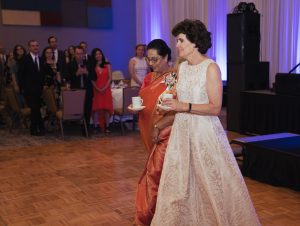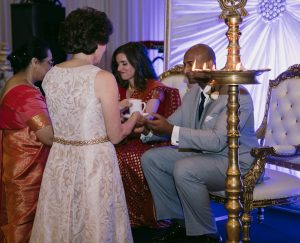Incorporating Syro-Malabar Rite Traditions into Our Wedding
One aspect of our wedding day that I look back on with so much gratitude is the integration of two different cultures and the unique traditions that we celebrated together, thanks to my husband’s family. Rijo’s family are members of the Syro-Malabar Rite of the Catholic Church. Prior to meeting him, I had never been to a Mass or any liturgical celebration in that Eastern Rite.
Many people ask if it was hard to integrate two cultures and two liturgical traditions. I always respond, “It was one of the best parts of our wedding day!” Here are a few snapshot moments of our wedding day that incorporated traditions from the Syro-Malabar Rite.
The Wedding Saree (Manthrokodi)
The manthrakodi is a saree given as a gift to the bride from the groom and his family. Literally translated, its name means “garment of prayers.” The mathrakodi is symbolic of Christ’s clothing His bride the Church with glory. It is put over the bride’s head as a mantle and reflects the promise of the groom to honor, protect, and provide for his new bride for the rest of their lives.
Tying of the Thali (Minnu)
The thali is the foremost symbol of the covenant of marriage among Christians in India. It is a leaf shaped pendant with a cross made of seven small beads in the center. The thali symbolizes the bond of marriage between husband and wife as a reflection of Christ’s love for His bride, the Church. The thali is placed on a string made up of seven strands of thread taken from the manthrakodi and tied around the bride’s neck by the groom. The knot reflects the permanence of marriage, and the bride wears the thali for the rest of her life as a sign of their marriage.
Each time I see the thali around my neck I am reminded of the incredible grace I received on our wedding day and of God’s promise to be faithful to Rijo and I throughout our married life.
Welcoming Blessing
The Wedding Reception for an Indian family traditionally begins with a formal welcome blessing by the Mother of the Groom for the newly wedded couple. She blesses them by making the sign of the cross on their foreheads and saying a silent prayer over them.
Rijo’s twin nieces participated in this ceremony by accompanying Rijo’s mom with lighted candles.
Lighting of the Lamp
The Welcome Blessing is then followed by the Lighting of the Lamp. The Bride and Groom light the lamp to symbolize their commitment to keeping the Light of Jesus Christ in their marriage and reflecting that light to the world through their newly created family. The Lamp is a special ceremonial oil lamp that features a cross unique to the Indian tradition.
Sweetening the Marriage
The Mothers of the Bride and Groom present the couple with sweet milk as a symbol of blessing and to sweeten the life of their marriage. The Mother of the Bride serves the Groom, and the Mother of the Groom serves the Bride. This symbolizes each mother welcoming their new child into the family with this sign of nourishment.
These traditions brought an incredible richness to our wedding day. To any future bride wondering if it’s possible to incorporate and blend two unique family traditions – yes! I think the secret (at least for us) was to focus on what we found the most meaningful and to simplify the rest. We chose to forgo a bouquet toss, garter toss, and a complex wedding entrance. I don’t regret it. I’m glad we chose to be selective and highlight the richness of my husband’s culture. We also put a lot of effort into our ceremony program, which described the various traditions, so that my family and friends could follow along. Marriage unites more than two individuals; it unites two families. I am so grateful that our ceremony and reception could be an expression of that.


